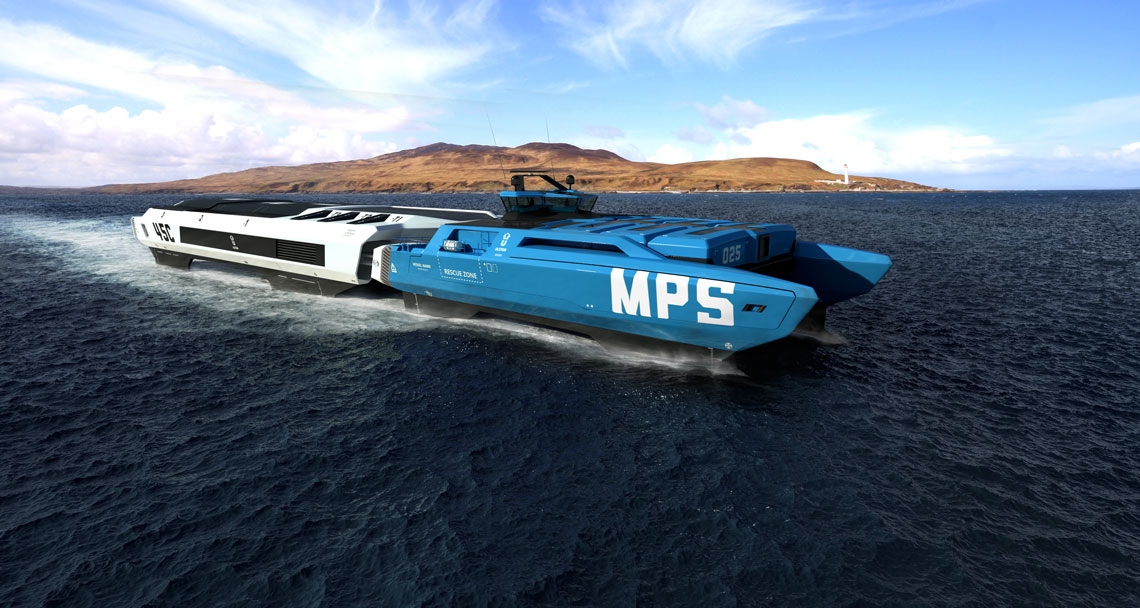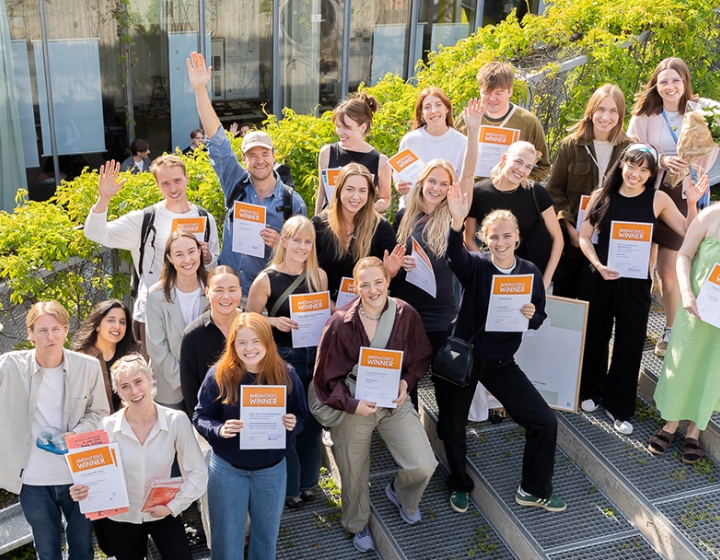Diploma Project wins the Red Dot Design Award
"The Future of Offshore Supply" by Martin Skogholt Hansen and Mikael Johansen has won the renowned design competition Red Dot Design Award.
Red Dot winners Martin and Mikael, who graduated from AHO in 2013, has developed a new vessel concept that increases efficiency and safety in the offshore industry.
Red Dot Design Award is considered one of the world's most prestigious design competitions. This year 4680 contributions from 61 countries were submitted, of which 229 were appointed as Red Dot winners. The awards were presented in Singapore in September.

The two young designers are thrilled about the result.
“The competition is open to both students and professionals. It shows that design students from AHO holds a high international level”.
“The price is very important to us. It's great to get recognition for all the hard work we've put in. The price also helps with branding ourselves as designers and gives us international attention. It was incredibly exciting to be in Singapore and feel the atmosphere”, said the winners.
This is not the first time Mikael and Martin win a prize for their diploma project. They previously won second place in the Norwegian Design Council's Young Talent Competition 2014 as well as the international competition C77 Design Awards 2014, Category Transport.

Mikael and Martin said that the project has been a great help when they were trying to get a foot in the design industry. Both now work at two of the leading design firms in Norway. Martin is an industrial designer with Eggs Design in Oslo and Mikael is an industrial designer at Eker Design in Fredrikstad.
Today, the Diploma project is something they are working on in their spare time.
The Future of Offshore Supply explores the future of platform supply vessels, and challenge the traditional way the maritime industry designs and use offshore vessels.
The result is a concept of a new platform supply vessel, where Martin and Mikael explored design opportunities to increase efficiency, safety and flexibility of cargo handling.
Container-like accommodations can be added to the vessel itself to meet demands of different scenarios. The key feature of the new design is the attachable unit behind it, like a trailer on water. This unit can for example be designed as a cargo-unit or sub-sea installment unit.
Red Dot Design Award is considered one of the world's most prestigious design competitions. This year 4680 contributions from 61 countries were submitted, of which 229 were appointed as Red Dot winners. The awards were presented in Singapore in September.
The two young designers are thrilled about the result.
“The competition is open to both students and professionals. It shows that design students from AHO holds a high international level”.
“The price is very important to us. It's great to get recognition for all the hard work we've put in. The price also helps with branding ourselves as designers and gives us international attention. It was incredibly exciting to be in Singapore and feel the atmosphere”, said the winners.
This is not the first time Mikael and Martin win a prize for their diploma project. They previously won second place in the Norwegian Design Council's Young Talent Competition 2014 as well as the international competition C77 Design Awards 2014, Category Transport.
Mikael and Martin said that the project has been a great help when they were trying to get a foot in the design industry. Both now work at two of the leading design firms in Norway. Martin is an industrial designer with Eggs Design in Oslo and Mikael is an industrial designer at Eker Design in Fredrikstad.
Today, the Diploma project is something they are working on in their spare time.
The Future of Offshore Supply explores the future of platform supply vessels, and challenge the traditional way the maritime industry designs and use offshore vessels.
The result is a concept of a new platform supply vessel, where Martin and Mikael explored design opportunities to increase efficiency, safety and flexibility of cargo handling.
Container-like accommodations can be added to the vessel itself to meet demands of different scenarios. The key feature of the new design is the attachable unit behind it, like a trailer on water. This unit can for example be designed as a cargo-unit or sub-sea installment unit.



